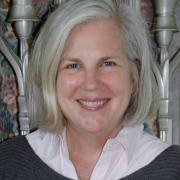Women in the Arts
The best thing about March is the annual outpouring of information about women. This year's rich harvest includes some terrific profiles of women's work in photography, theater, and museum leadership. Make no mistake - new ground is being broken here, and we are still seeing many "firsts".
My own WHM observance began last week, at the National Geographic's Women of Vision exhibit. Going in, you only know you will see the work of 11 female photojournalists. I wondered, will their gender be obvious in their work? Do they choose different subjects than men do? Do they see the world through a particular lens? I discovered some answers.
There were indeed pictures about child marriage, acid attacks, human trafficking, sister-wives, and the world of muslim women, where men would simply never be permitted. Some of the frames could only have been shot by a woman, because it would not have been possible, or have even occurred to a man to raise a camera in that circumstance. In some cases, a woman could move unnoticed, due to the gender attitudes of a particular place. Many shots reveal a relational awareness, of the love between elderly brothers, or the dynamics in a family groups, and aboriginal children and their environment. It seemed to me to be all about connection - between photographer and subject, between the subject and the context, and between the viewer and both those things. So worth visiting! NPR did a 7 minute radio feature with two of the contributors you can listen to. The exhibit is in Washington DC until March 9, and then travels to Charlotte, NC and Bloomfield Hills, MI. If you have half an hour, there's a video of a panel discussion between Ann Curry and all 11 photojournalists to take you deeper. Wonderful stuff.
If you go to museums, you may notice that most of what you see is created or produced by men. I assumed (wrongly, as it turns out) that men were the majority of the museum establishment that decides what and how the objects are presented. The Washington Post has set me straight with a big section called The Directors. Get a load of this!
For decades, women have held many positions in the museum field, working as curators, development specialists and press secretaries. But in recent years, women have assumed the director title in droves. As of 2012, 57 percent of museum directors in the United States are women, according to the American Alliance of Museums. In Washington, about 50 percent of museums and historical sites are now led by women, with many helming active, popular museums with regional and national appeal, such as the National Portrait Gallery, the Holocaust Memorial Museum and the Phillips Collection. In the past six years, five of the region’s most prominent museums have gained a female director.
But hold off on the happy dance. As in other fields, women may be directors, but they are still not getting the highest salaries, nor heading museums with the biggest budgets or the greatest foot traffic. These leaders note that the ability to fundraise and develop expertise is not limited by gender. However, the boards that appoint the directors are heavily male and white, so a lack of diversity on boards keeps women from the directorship at the most iconic US institutions. And women's other roles exert pressure here as elsewhere. Kim Sajet, head of DC's own National Portrait Gallery, says “I lucked out and married an incredible man, and we talked a lot about gender roles before having children... But when I get home, it’s second shift, so I end up making a lot of casseroles. You have to always be thinking a couple of steps ahead.”
Lastly, there is much to look forward on DC stages. Finally, enough people have gotten sufficiently exercised about the gender disparity in theater to do something about it. Following a pattern set in most other fields, the vast majority of stage productions are written by men. In Washington DC, a target rich theater town, about 1 of every 4 plays produced are written by women. Nationally, the figure is one out of 5. Variety says:
Per the L.A. Female Playwrights Initiative, only 16% of plays in Los Angeles’ 2013-14 season are written by women (with the same percentage femme-helmed). A publicity-grabbing 2009 study out of Princeton U.’s economics department found that on average, woman write one in eight Broadway shows. And according to the Theater Communications Group, only 33% of the artistic leaders of nonprofit theaters around the country are women (a percentage that drops further as operating budgets get larger).
(Hmm, that last observation also showed up in the women as museum directors bit above!) So, a special effort will be made to produce the work of women in the fall of 2014. It'll be called the Women's Voices Festival, and will include 45 DC theatres, all presenting plays written by women. It may not permanently lead to women's perspectives being fully included on the theater scene. "But the festival does throw down a gauntlet, in the cause of striking a more equitable gender balance — especially given that surveys show that women make up as much as two-thirds of the theatergoing audience across the nation," says The Washington Post.
So do something in March to celebrate your own rich history. Why not even make some history yourself?
'Til next time,
Your (Wo)Man in Washington

The views and opinions expressed in this post are those of the author(s) and do not necessarily reflect those of MomsRising.org.
MomsRising.org strongly encourages our readers to post comments in response to blog posts. We value diversity of opinions and perspectives. Our goals for this space are to be educational, thought-provoking, and respectful. So we actively moderate comments and we reserve the right to edit or remove comments that undermine these goals. Thanks!